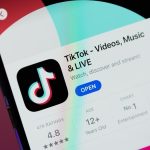Chip Somodevilla/Getty Images
- CDC director Rochelle Walensky sat down for an exclusive interview with Business Insider, one year into her new job.
- She said one of the biggest communication issues the agency has struggled with amidst the pandemic has been “not saying ‘for now'” when it shifts its guidance.
- “We even have to act in times where we have imperfect information, because the situation is imperfect itself,” she said.
The Centers for Disease Control and Prevention has taken a lot of heat for its confusing shifts in guidance during the COVID-19 pandemic.
Mask-wearing is a notable example. First, we were told don’t wear a mask unless you’re a healthcare worker or treating someone who’s sick. Then, just a few months later, everyone needed to mask up. After vaccines came out, the masks came off, then they went back on.
More recently, there was renewed confusion about the CDC’s isolation rules for people with COVID-19. At the end of December, the CDC’s longstanding 10-day isolation and quarantine rules were slashed to 5 days. But there wasn’t any clear, accompanying articulation from the agency that just because you were leaving the house on day 6 didn’t mean you should forgo a mask, or assume you were not infectious. That didn’t get cleared up properly until nearly two weeks later, when everyone (including many nurses and doctors across the country) was fully confused about what was going on.
Dr. Rochelle Walensky, head of the CDC, says the agency is tasked with authoring “pretty comprehensive guidance” for all different kinds of organizations and situations nationwide, and that’s been a challenge during this pandemic, when both people’s behavior and the virus are in flux.
“Increasingly, people wanna understand the details in the nitty-gritty — people who may not be trained in epidemiology or science,” Walensky said during a Q&A with Insider earlier this week, acknowledging that the agency could stand to do more to “unpack” the nuances of its various shifts in guidance, and why they’re being authored.
“We have a responsibility to follow the science at the moment,” she said. But she acknowledged the agency hasn’t always been great at reminding people that science evolves, and even experts don’t always have the crystal-clear answers that everyone wants.
“Given the curve balls of this pandemic, we perhaps need to sort of articulate a little broader — ‘but this could change,'” she added.
Getting better about saying ‘this could change’ and new guidance is ‘for now’
For example, when the CDC told vaccinated people they didn’t have to wear masks anymore in May of 2021, “that was the right scientific thing to do” at the time, Walensky said. The less-contagious Alpha variant was circulating widely, and vaccine effectiveness against it was very, very high.
“Perhaps the challenge that we had at the time was not saying ‘for now’ — that there may be other variants that come down the pipeline that lead to future surges, where our vaccines aren’t gonna work as well,” she said. “And that’s indeed what happened.”
Often, the director said her agency is balancing at least three key questions, when it weighs a shift to the protocol:
- “First, what is the science that we know?”
- Next, what is the epidemiology, or “how many cases do we anticipate coming?”
- And, “then importantly, what is implementable, what’s feasible? What can people do?”
“Founded on the science of the current moment, even in some cases where it may be imperfect, that is the context of our decisions,” she said. “And sometimes we actually have to make decisions when we don’t even have all of the data that we need. When the data are grayer than we would like, but a failure to make a decision is a decision in and of itself. And so we even have to act in times where we have imperfect information because the situation is imperfect itself.”
She anticipates the CDC will likely have to continue changing tactics to combat the virus in the months and years ahead — the big question now is how well the agency will rise to the challenge of conveying them simply, accurately, and thoughtfully, all while operating at high speed.
“Historically, this agency has had a reputation of dotting every I and crossing every T,” she said. “The science gets out, but it takes a longer period of time than others may have liked. We’re working on that.”
“If there’s new and evolving science, new and evolving variants, new and involving scientific information, then we will follow it, and then we will make changes accordingly.”
Read our full interview with CDC Director Rochelle Walensky here.
Powered by WPeMatico





